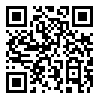

Volume 9, Issue 2 (lasers in medicine 2012)
ASWTR 2012, 9(2): 28-35 |
Back to browse issues page
Download citation:
BibTeX | RIS | EndNote | Medlars | ProCite | Reference Manager | RefWorks
Send citation to:



BibTeX | RIS | EndNote | Medlars | ProCite | Reference Manager | RefWorks
Send citation to:
Baheri N, Miranbaygi M H, Malekfar R. High Performance Method for Skin Roughness Detection Using Raman Spectroscopy. ASWTR 2012; 9 (2) :28-35
URL: http://icml.ir/article-1-258-en.html
URL: http://icml.ir/article-1-258-en.html
Biomedical Department, Tarbiat Modares University, Tehran, Iran.
Abstract: (6287 Views)
In this paper, we studied skin roughness, with Raman Spectroscopy technique. The main goal of this study was to determine the features from the Raman spectral data associated with skin roughness and to detect roughness from normal skin by using a proper classification method. The Raman spectral dataset was constructed from two classes of spectral data, 70 spectra of normal intact skin and 70 spectra of irritated rough skin. Roughness irritation was induced by sodium dodecyl sulfate(SDS) non-ionic surfactant applied daily on rat skin for a week. The spectra were obtained from legs and dorsal anatomical regions. Some features related to specific bond vibrations of water, lipid and protein structures were extracted from the spectra. T-test statistical analysis was then utilized to determine whether the specified feature could discriminate the two classes of spectral data. The reported efficient features from t-test stage were then applied to well-known classification methods such as LDA and KNN for classification. Classification performance was calculated using k-fold cross validation method for selecting the proper classifier and features. The statistical analysis of water content and lipid structures between two classes showed a significant difference by p-value<<0.01, whereas alterations in features related to proteins were not remarkable between two classes of data. Water content and lipid structures were the proper features for skin roughness detection. The results from LDA and KNN of each extracted feature showed a maximum 80% accuracy and 76% specificity in classification of spectral data. In order to improve the efficiency of detection, combination of extracted features were applied to LDA and KNN classifier which resulted in 85% accuracy and 87% sensitivity in classification.
Keywords: Raman Spectroscopy, T-test statistical analysis, feature extraction, classification, K-fold Cross validation.
Educational: Research |
Subject:
General
Received: 2013/01/27 | Accepted: 2013/03/16 | Published: 2013/06/16
Received: 2013/01/27 | Accepted: 2013/03/16 | Published: 2013/06/16
Send email to the article author
| Rights and permissions | |
 |
This work is licensed under a Creative Commons Attribution-NonCommercial 4.0 International License. |


